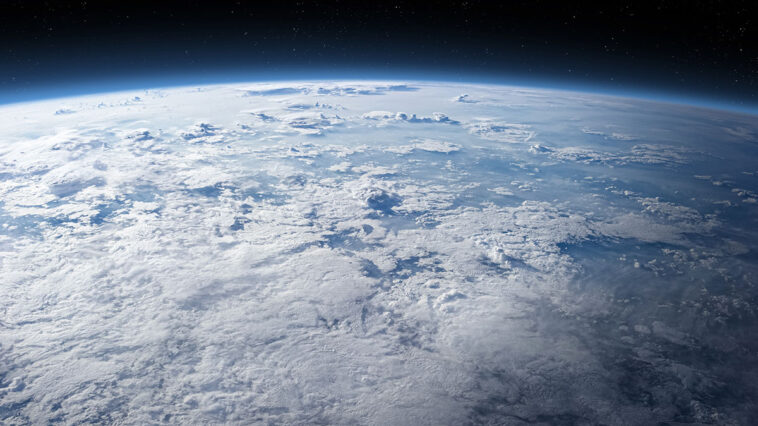“The world we have created is a product of our thinking; it cannot be changed without changing our thinking.”
—Albert Einstein
There is a misconception about why global temperatures and sea levels are rising so rapidly due to climate change. Decision-makers seek certainty to justify the extraordinary costs of addressing climate change. They want models that predict the extent of future impacts and to know how much time remains to act. Once they sought the counsel of oracles, now they turn to science to forecast future outcomes.
The nature of science has changed. A few decades ago, research primarily involved collecting and analyzing observations, which formed the basis for hypotheses and theories. Today, with vast amounts of data and increasingly powerful computers for simulations, there is a tendency to align models with observations rather than accurately capturing the underlying physics. For modelers, there are pressures to dismiss discrepancies, assign blame, and request higher spatial resolution along with more data of finer granularity. They desire computers with the certainty needed in systems that operate like a small nuclear power plant.
Complexity In The Water Cycle
A recent report in Science analyzed the 1.5 degrees Kelvin rise in global temperatures, finding that rising carbon dioxide emissions were responsible for approximately 0.2 degrees of the 1.5-degree increase, accounting for about 11%. Water vapor caused 1,2 degrees, 80%, of increased global temperatures. Water is the largest greenhouse gas. Water vapor in the atmosphere acts as a heat reservoir, warming the planet and driving climate change at a rate eight times that of carbon dioxide emissions.
Let’s step away from predictive modeling and acknowledge the dynamic complexities of water and the challenges faced by meteorologists and climate science. When water evaporates from a liquid to a gas, the reaction is endothermic, meaning that heat energy is absorbed, causing it to cool. When water condenses from vapor to liquid, the reaction is exothermic, releasing heat energy to warm the morning dew. Scientists debate whether water has a fourth state of matter. The slushy transition from liquid to ice possesses unique characteristics.
Plants complicate the work of scientists seeking certainty about the future. They have the agency to bring water to themselves and regulate microclimates, which enabled life to emerge from water. Plants open their stomata when it’s hot and during the coldest hour before dawn to release water vapor, which contains bacteria and fungi. The water from plants, known as evapotranspiration, varies significantly by location, accounting for 10-80 percent of rainfall.
Beyond vegetation releasing moisture into the atmosphere, radiant warming of the land causes water vapor to rise in hot air. As it cools, water molecules nucleate around organic particles, such as bacteria and fungi, to form clouds. Should the rising air contain dust particles, water molecules come together to form haze because an electromagnetic charge prevents water droplets from forming clouds. Haze holds radiant heat to warm the atmosphere. Conversely, cumulus clouds hold radiant heat; yet, they release more heat as reflected light away from the planet. Three decades ago, the Earth was covered by more than 50 percent cumulus clouds. Today, it’s a percentage point or two less, and we suffer from global warming. 2, 3
The rising air and water vapor from plants draws in air from over water bodies, establishing what is known as the biotic pump. Plants draw water to themselves and regulate microclimates, which allowed plant life to spread from water bodies across the land.
Humans Change The Water Cycle
When property owners turn vegetation and soil into hard, impervious surfaces like a driveway or paved path rainwater can no longer infiltrate into the ground. Examining the landscape, it is too often evident that heat islands have replaced lush green areas. Developed properties gather and accelerate rainwater into stormwater, scouring and cutting the land, clogging it with sediments, at the expense of other property owners, municipalities, and ecosystems.
An example of this occurred in were being developed into a 4-megawatt, 17,000-panel solar energy array when 1.95 inches of rain fell in January. Stormwater off the solar site altered approximately 97,000 square feet of protected wetlands and more than 41,000 feet of riverfront area, smothering the West Branch of the Mill River. Wildlife habitats and vegetation were destroyed, and the flow of the tributaries into the river was changed. The developer was compelled by the courts to a fraction of the actual costs.
Healthy soils act like a sponge. Four inches of soil can retain seven inches of rainwater because sticky carbohydrates keep minerals separated sufficiently far apart. Healthy soils undergo a chemical process to form humus, which binds carbon for thousands of years. We often mistake it for dirt. Yet, soil is as different from dirt as bread is from flour. Bread is flour mixed with live yeast that causes it to rise and hold it together. Soil has life; dirt does not.
Plants photosynthesize, absorbing carbon and water from the air to produce carbohydrates. During photosynthesis, plants release about a third of the carbohydrates through their roots to enrich the soil. Grasses are particularly effective at building soil, releasing up to half of their carbohydrates. A non-chemically treated lawn, mowed every two or three weeks with the blade set at a height of four inches, . This occurs because damaging grass cells encourages growth and triggers the breakdown of tough fibers to nourish the soil. When you walk on the grass, you help enhance carbon drawdown.
When vegetation is removed near open water, the land absorbs heat and radiates it. These heat islands warm the moist air rising from the water. As the air expands from the heat, it dries out. Sea breezes, previously moist, become dry winds. Restoring vegetation along the shore will help restore the weather and the ecosystem for its inhabitants.
Soils have lost the moisture needed by plants and others to grow and sustain lifemore than the volume of Lake Huron (3,500 km3)—double trouble for the climate with drier soils for clouds and drier winds off the water.
Two Opportunities For Positive Action
Given that climate change is a planetary problem, it is remarkable that the United Nations Intergovernmental Panel on Climate Change appears to consider sea level rise as solely an ocean and ice issue. The IPCC wrote that “the combined effects of thermal expansion of seawater and melting of the terrestrial cryosphere result in global mean sea level rise.” However, there have been no reports of ocean water bodies changing density due to thermal expansion, and numerous reports have documented stormwater devastating communities as it crashes into the sea.
There are two halves to the climate change calamity. The rise in greenhouse gases, mostly water, and the loss of soil moisture, groundwater, soil, and vegetation. One is dependent on the other. Suppose we adopt a nature-based solution that incorporates more soil, moisture, and vegetation. In that case, the current carbon dioxide level of 420 ppm will result in less warming and less damage to the planet.
When we become savvy to the vagaries of science, we can brighten our future with more vegetation, restoring moist air and promoting cumulus cloud formation, while experiencing less extreme weather and fewer fires. By finding ways for the land to retain its rainwater, we can lessen the impacts of the 420 parts per million carbon burden.
With more carbon sponges spread throughout the land, there would be less stormwater damage and sea level rise. With more moisture in the soil, environmental stability, biodiversity, and neighborhood comfort will return as we adopt a more biosphere-focused approach with natural biotic-water pumps working at full capacity.
About the Author
Dr. Rob Moir is a nationally recognized and award-winning environmentalist. He is the president and executive director of the Ocean River Institute, a nonprofit based in Cambridge, MA, that provides expertise, services, resources, and information not readily available on a localized level to support the efforts of environmental organizations. Please visit www.oceanriver.org for more information.




GIPHY App Key not set. Please check settings